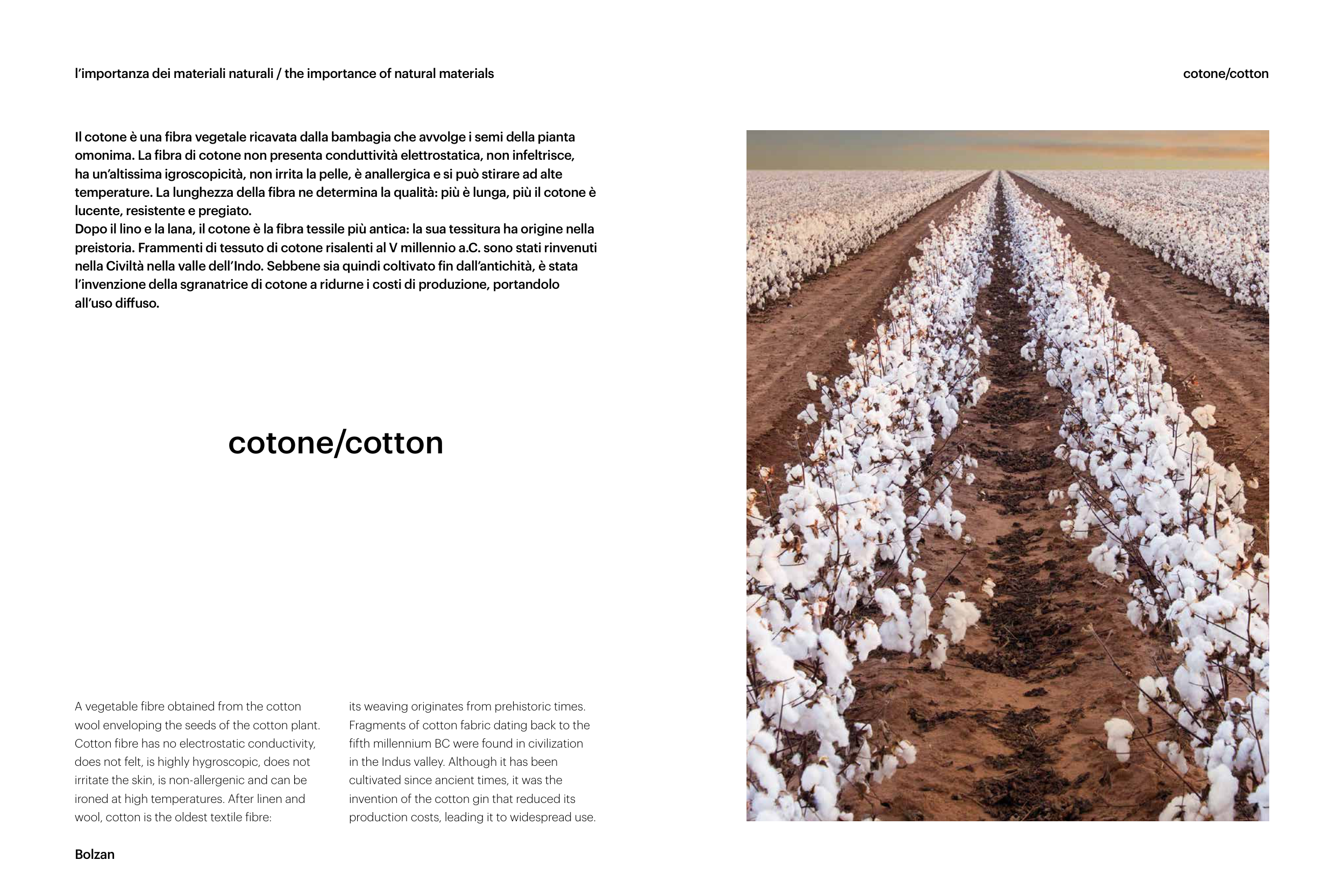Il cotone è una fibra vegetale ricavata dalla bambagia che avvolge i semi della pianta
omonima. La fibra di cotone non presenta conduttività elettrostatica, non infeltrisce,
ha un’altissima igroscopicità, non irrita la pelle, è anallergica e si può stirare ad alte
temperature. La lunghezza della fibra ne determina la qualità: più è lunga, più il cotone è
lucente, resistente e pregiato.
Dopo il lino e la lana, il cotone è la fibra tessile più antica: la sua tessitura ha origine nella
preistoria. Frammenti di tessuto di cotone risalenti al V millennio a.C. sono stati rinvenuti
nella Civiltà nella valle dell’Indo. Sebbene sia quindi coltivato fin dall’antichità, è stata
l’invenzione della sgranatrice di cotone a ridurne i costi di produzione, portandolo
all’uso diffuso.
A vegetable fibre obtained from the cotton
wool enveloping the seeds of the cotton plant.
Cotton fibre has no electrostatic conductivity,
does not felt, is highly hygroscopic, does not
irritate the skin, is non-allergenic and can be
ironed at high temperatures. After linen and
wool, cotton is the oldest textile fibre:
cotone/cotton
l’importanza dei materiali naturali / the importance of natural materials
its weaving originates from prehistoric times.
Fragments of cotton fabric dating back to the
fifth millennium BC were found in civilization
in the Indus valley. Although it has been
cultivated since ancient times, it was the
invention of the cotton gin that reduced its
production costs, leading it to widespread use.
Bolzan
cotone/cotton


